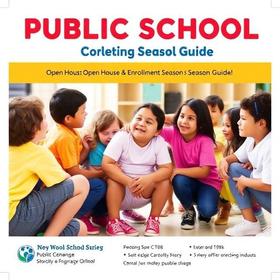One of the fastest-growing trends in the educational landscape of 21st-century America is single-sex education. Fueled by research studying the different learning styles between the two genders, more public schools are contemplating single-sex student populations. As the public grows more concerned about achievement gaps between girls and boys, parents are increasingly seeing single-sex public schools as an attractive alternative to conventional coeducational environments.
The Growing Support for Single-Sex Education
Fueled by a bevy of research, proponents of single-sex education tout several benefits that are not associated with coeducational campuses.
A Way to Address Gender Gaps
In the 1990s, the American Association of University Women issued a report called "Shortchanging Girls, Shortchanging America," which raised public awareness about how girls' self-esteem and proclivity for mathematical and scientific pursuits plummet as they progress through the public school system.
In the 2000s, the public's focus began to shift towards how our public school system shortchanges boys, as boys increasingly lagged behind girls in rates of high school graduation and college matriculation. While boys still tend to outscore girls in math and science achievement tests, girls tend to outpace boys in reading and writing tests.
Many advocates for single-sex schooling believe that gender-segregated classrooms can help to undo these seemingly entrenched gender disparities. Tom Carroll, chairman and founder of the Brighter Choice Charter School for Boys and the Brighter Choice Charter School for Girls in Albany, says that his schools' recently released test scores showed that his students performed better on both of these measures than their counterparts in Albany's coeducational schools. "Paradoxically," he told the New York Times, "by educating them separately, we were able to do much to reverse the gender gaps that typically leave girls behind in math and boys behind in literacy."
In a similar vein, a June 2005 study by Cambridge University researchers (reported on by the National Association for Single Sex Public Education) found that single-sex classes resulted in improvements in boys' performances in English and foreign language classes, along with similar improvements in girls' performances in science and math. The potential for single-sex schools to prevent or undo gender-based achievement gaps may be one of the movement's most vital selling points.
Awareness that Boys and Girls Learn Differently
Several recent studies have suggested that boys' and girls' brains tend to develop at different rates, according to a New York Times Magazine report on the single-sex schools movement. Some argue that these gender-based brain differences mean that girls and boys need to be taught differently. The most efficient way of implementing current knowledge about brain development in each gender is to provide separate educational environments for boys and girls.
A Response to Discipline Problems
Connecticut opened its first single-sex public school, a high school for boys in the city of Hartford, in Fall 2008 as a way of addressing the discipline problems that plagued its public schools. The New York Times reported that in the time leading up to the decision to open a single-sex school, boys had a lower graduation rate than girls, as well as more disciplinary problems.
Local educators decided to open a single-sex school to serve the needs of those boys who seemed to be falling through the cracks of the current system. The Hartford superintendent spoke of the need for "eliminating distractions" to improve the boys' educational progress.
New Federal Support for Single-Sex Schools
The Department of Education fulfilled the legislature's call to action in 2006 when it made a key change in federal regulations that allowed school districts to create single-sex public schools without being hampered by limitations that had previously existed due to Title IX, the federal law prohibiting sex discrimination in education. The new federal regulations allow school districts to create single-sex schools and classes as long as enrollment is voluntary and the excluded sex has access to coeducational schools and/or classes of "substantially equal" quality.
Concerns and Criticisms of Single-Sex Campuses
Opponents of single-sex public schools raise questions surrounding the effectiveness and constitutionalism of these campuses.
Potential for Discrimination
The Leadership Conference on Civil Rights voiced strong opposition to the 2006 change in federal regulations for single-sex schools, writing on its website that the new rules "violate both Title IX and the equal protection clause of the Constitution." In the same letter, the civil rights umbrella group argued that the new federal regulations allow districts to create sex-segregated schools based on "nothing more than untested beliefs, stereotypes and assumptions."
Those who are ambivalent or unsure about single-sex education often voice the concern that single-sex schools may reinforce pre-existing gender stereotypes. Furthermore, the New York Times reports that the American Civil Liberties Union, the nation's largest civil rights watchdog group, opposes all single-sex education.
Research is Mixed on Effectiveness of Single-Sex Schools
Both critics and advocates have acknowledged that there is a lack of clear research demonstrating the effectiveness of single-sex education. Speaking with the New York Times, Cornelius Riordan, a professor of sociology at Providence College, said that the leading studies comparing single-sex education with coeducational models have been divided between those that show some benefit from single-sex educational environments and those that show no difference between the two models.
The Bottom Line: Demand Continues to Grow
The number of parents who are voluntarily seeking out single-sex educational environments for their children suggests that this movement will continue to grow. The New York Times reported in 2008 that there were 48 single-sex public schools in operation, an increase of more than 2000% from 1995 when the country had only two single-sex public schools.
What's the bottom line of public single-sex education? Parents and students are not waiting for more studies or for long-ranging debates about gender-based brain differences to be settled. Parents and students are looking for an educational environment that will give them the best chance of success in a complex world, and an increasing number are finding that the best educational environment may be one without the opposite sex.
Questions? Contact us on Facebook and Instagram. @publicschoolreview
#SingleSexEducation #GenderSpecificLearning #AcademicPerformance #EducationalTrends #SchoolChoice













